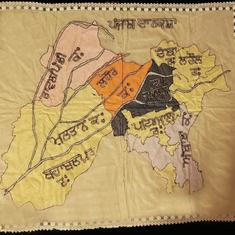Gurgaon, or Gurugram, is a city of numbers. As its advocates often like to point out, Delhi’s booming neighbour has 1,100 high-rises, at least 30 malls and thousands of small and big industries. On the other hand, as its detractors unfailingly like to note, the dust bowl’s population has grown two and a half fold, it has 12-hour power blackouts, and its groundwater would probably not last beyond this decade.
These numbers alone don’t capture the lived reality of Gurgaon, though. The skyline that its older residents were accustomed to has completely disappeared. Their landscape today lies brutalised.
The transformation began sometime around 1996, with the advent of Genpact, then a business unit of General Electric. Other multi-national companies followed it slowly thereafter. It helped that the city was a few kilometres away from Delhi. Two decades on, Gurgaon is already "on its deathbed". It is speckled with glass buildings with curtain walls, and swish apartment blocks with Greco-Roman influences, but there is little water or power for them.
I set out to record this grim transition in 2014 – to explore the tangibles and intangibles involved in a city’s development. The contours of the project were decided during a site visit while I was studying the defective town planning. I could see even then the ephemerality of Gurgaon’s glamour. Families had been displaced, labourers’ children were growing up on heaps of cement, and farmlands had turned into things of memories.
Gurgaon, or Gurugram as the Haryana now wants to call it, is still an Unfinished City. As it expands horizontally and vertically, it continues to transition from farms to urban villages to a concrete maze. Numbers alone can’t tell that story. Perhaps some images can.



















